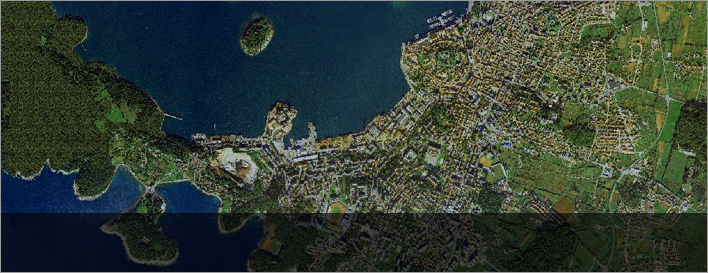Dr. Yuting Zhou


Dr. Yuting Zhou is co-director of the Center for Applications of Remote Sensing and an assistant professor in the Department of Geography at Oklahoma State University. He is a member of the OK NSF EPSCoR Track-1 RII Award titled Socially Sustainable Solutions for Water, Carbon, and Infrastructure Resilience in Oklahoma. The $20 million research project is a social science-led, multi-disciplinary collaboration among social, physical, biological, engineering, and computational scientists. More than thirty researchers from across the state are working together on the project, which began July 1, 2020.
Dr. Zhou’s research quantifies the impacts of climate and human activities on ecosystem structure, processes, and dynamics. Dr. Zhou’s research aims to advance understanding of Earth systems by using GIS, remote sensing (satellite remote sensing and unmanned aerial systems), eddy covariance, computer science (machine learning), and modeling in an integrated manner. Specific research interests include land use and land cover change (e.g., paddy rice mapping and hay harvest monitoring), agricultural drought, food-water-energy nexus, sustainability of coupled human and natural systems, and ecohydrological modeling.
Dr. Zhou's work on the OK NSF EPSCoR project will address monitoring sub-seasonal to seasonal variability of drought in the Great Plains. He will also guide a graduate student's work on evaluating the impacts of drought on socio-economic sections in the region using satellite remote sensing and statistical data. This research supports the EPSCoR project's Focus Area 1: Changing Subseasonal to Seasonal (S2S) Weather Patterns. Change in both natural and human systems in Oklahoma is being driven by rapidly changing patterns of subseasonal to seasonal weather. These fluctuations include shifts in average and extreme precipitation and temperature on scales of 10-90 days. Changes are occurring in the context of competing social narratives of human activities' effect on climate, complicating recognition of and response to changing S2S patterns.
Dr. Zhou is also the lead PI for the OklahomaView, which is the StateView program of the AmericaView for Oklahoma. AmericaView is a nationwide partnership of remote sensing scientists who support the use of Landsat and other public domain remotely sensed data through applied remote sensing research, K-12 and higher STEM education, workforce development, and technology transfer.
- Ma, S., Zhou, Y., Chen, L., Gowda, P., Dong, J., Zhang, G., Kakani, V., Wagle, P., Chen, L., Flynn, K.C., Jiang, W. 2019. Water Related Spectral Reflectance Indices: A review. Ecological Indicators 98:68-79.
- Zhou, Y., Gowda, P., Wagle, P., Ma, S., Neel, J.P.S., Kakani, V.G., Steiner, J.L. 2019. Climate Effects on Tallgrass Prairie Responses to Continuous and Rotational Grazin. Agronomy. 9(5):219.
- Ma, S., Zhou, Y., Gowda, P., Chen, L., Starks, P.J., Steiner, J.L., Neel, J.P.S. 2019. Evaluating the Impacts of Continuous and Rotational Grazing on Tallgrass Prairie Landscape Using High-Spatial-Resolution Imagery. Agronomy. 9(5):238.
- Doughty, R., Xiao, X., Wu, X., Zhang, Y., Bajgain, R., Zhou, Y., Qin, Y., Zou, Z., McCarthy, H., Friedman, J. and Wagle, P. 2018. Responses of Gross Primary Production of Grasslands and Croplands under Drought, Pluvial, and Irrigation Conditions during 2010–2016, Oklahoma, USA. Agricultural Water Management. 204:47-59.
- Zhou, Y., Xiao, X., Zhang, G., Wagle, P., Bajgain, R., Dong, J., Jin, C., Basara, B.J., Anderson, C. M., Hain, R.C., Otkin, A. J. 2017. Quantifying Agricultural Drought in Tallgrass Prairie Region in the U.S. Southern Great Plains through Analysis of a Water-related Vegetation Index from MODIS Images. Agricultural and Forest Meteorology. 246:111-122.
- Zhou, Y., Xiao, X., Wagle, P., Bajgain, R., Mahan, H., Basara, B.J., Dong, J., Qin, Y., Zhang, G., Luo, Y., Gowda, P.H., Neel, J.P.S., Steiner, J.L. 2017. Examining the Short-term Impacts of Diverse Management Practices on Plant Phenology and Carbon Fluxes of Old World Bluestems Pasture. Agricultural and Forest Meteorology. 237-238:60-70.
- Bajgain, B., Xiao, X., Basara, J., Wagle, P., Zhou, Y., Zhang, Y., Mahan, H. 2016. Assessing Agricultural Drought in Summer over Oklahoma Mesonet Sites using the Water-related Vegetation Index from MODIS. International Journal of Biometeorology. 61(2):377-390.
- Zhou, Y., Xiao, X., Qin, Y.W., Dong, J.W., Zhang, G.L., Kou, W.L., Jin, C, Wang, J., Li, X.P. 2016. Mapping Paddy Rice Planting Area in Rice-wetland Mixed Areas through Analysis of Landsat 8 OLI and MODIS Images. International Journal of Applied Earth Observation and Geoinformation. 46:1-12.
- Dong, J., Xiao, X., Kou, W., Qin, Y., Zhang, G., Li, L., Jin, C., Zhou, Y., Wang, J., Biradar, C., Liu, J., Moore III, B. 2015. Tracking the Dynamics of Paddy Rice Planting area in 1986–2010 through Time series Landsat Images and Phenology-based Algorithms. Remote Sensing of Environment. 160:99-113.
- Wagle, P., Xiao, X., Scott, R. L., Kolb, T. E., Cook, D. R., Brunsell, N., Baldocchi, D. D., Basara, J., Matamala, R., Zhou, Y., Bajgain, R. 2015. Biophysical Controls on Carbon and Water Vapor Fluxes across Grassland Climatic Gradient in the United States. Agricultural and Forest Meteorology. 214:293-305.
